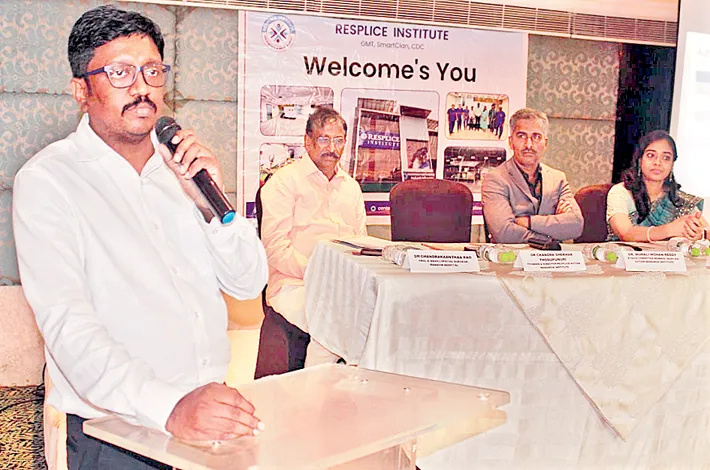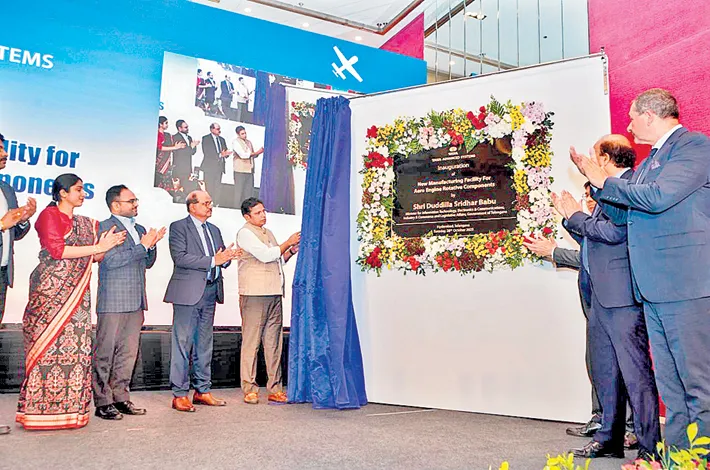Institutional corruption in bureaucracy: The rot within
19-10-2025 12:00:00 AM

Top “raids” on IAS/IPS officers where large amount of assets unearthed
- Former Director of Mines Sameer Vishnoi raided in Raipur. Assets attached / unearthed worth Rs. 500+ crore allegedly got from laundered funds from illegal coal levies
- Telangana ACB raided former Engineer-in-Chief Muralidhar Rao. Assets worth Rs 60 crorers disproportionate to known sources of income seized.
- Retired IAS Officer Anil Tuteja also raided in Raipur. Rs 121.87 crore attached assets allegedly in liquor scam.
- Former Uttar Pradesh Chief Secretary convicted of involved in fraudulent land dealings in and around Noida. Benami assets worth over Rs 100 crores seized.
- Former official of Bihar Rural Development Department Sanjeev Hans raided in Patna. Rs 23 crores worth assets and Rs 60 crores worth proxy shares seized. Allegedly obtained from a power department linked scam.
Political patronage forms another virulent strain. Bureaucrats are pawns in electoral chess, transferred en-masse post-elections to install pliable officers. In Punjab, Bhullar's appointment aligned with the Aam Aadmi Party's governance push, yet he allegedly exploited it for personal gain. A 2024 Lok Sabha debate revealed over 1,000 IAS/IPS transfers in five states; many linked to corruption probes. This nexus—politicians protecting corrupt officials for loyalty—shields the guilty.
In the corridors of power that define India's administrative machinery, corruption has long been a negative factor, diminishing public trust one bribe at a time. The recent arrest of Deputy Inspector General (DIG) Harcharan Singh Bhullar, a 2009-batch Indian Police Service (IPS) officer, serves as a stark emblem of this malaise. On October 17, 2025, the Central Bureau of Investigation (CBI) laid bare a shocking tableau of ill-gotten gains from Bhullar's premises in Punjab: stacks of Rs 5 crore in cash strewn across beds and floors, 1.5 kg of glittering gold jewellery, keys to a Mercedes and an Audi, 22 luxury wristwatches, documents for sprawling immovable properties, 40 liters of imported liquor, and an arsenal of firearms.
This wasn't the hoard of a drug lord but of a senior police officer entrusted with upholding the law. Bhullar, son of a former Punjab Director General of Police, was nabbed for demanding Rs 8 lakh in bribes from a scrap dealer to quash a fabricated criminal case, using a middleman to collect the extortion money. As the CBI's raids continue, exposing potential money-laundering trails, this scandal underscores a deeper rot: institutional corruption embedded in the bureaucracy, where guardians of justice become architects of extortion. Various views and discussions go into the root causes of this corruption and pragmatic ways to prevention, arguing that without systemic overhaul, such "mega hauls" will remain the rule, not the exception.
Institutional corruption in bureaucracy refers to the systemic erosion of ethical norms within public administration, where officials exploit their positions for personal gain, often with the tacit complicity of the institution itself. Unlike petty cases, which might involve a traffic cop demanding a few hundreds of rupees as bribes, institutional corruption manifests in grand scales—policy manipulations, tender rigging, and judicial interference—that distort governance and perpetuate inequality.
In India, the bureaucracy, comprising over 3 million civil servants under the All India Services (IAS, IPS, IFoS), is the backbone of policy execution. Yet, it has morphed into a fortress of favouritism, where loyalty trumps competence, and integrity is a relic of colonial-era ideals. The Bhullar case exemplifies this perfectly. As DIG of the Ropar Range, overseeing Mohali, Rupnagar, and Fatehgarh Sahib districts since November 2024, Bhullar wielded immense discretionary power. His career trajectory— from Senior Superintendent of Police in multiple districts to Joint Director in the Vigilance Bureau and leader of high-profile anti-drug probes—positioned him as an enforcer of the law.
He also spearheaded Punjab's 'Yudh Nasheyan Virudh' campaign against narcotics in 2021, even investigating Shiromani Akali Dal leader Bikram Singh Majithia. Yet, behind this facade, he allegedly threatened a local businessman, Akash Batta, with a trumped-up case unless monthly "settlements" flowed through his associate, Krishna. The CBI's trap in Chandigarh's Sector 21 caught Krishna red-handed with Rs 8 lakh, leading to Bhullar's arrest after a recorded call where he nonchalantly confirmed the payoff. Searches revealed not just opulence but a lifestyle incompatible with a government salary of around Rs 2-3 lakh monthly for a DIG. This isn't isolated; it's symptomatic of a bureaucracy where police officers, meant to be society's shield, have become its predators.
To understand why such scandals recur, one must dissect the causes, which are as structural as they are cultural. At the heart lies discretionary power unchecked by accountability. India's bureaucracy, inherited from the British Indian Civil Service, grants civil servants vast latitude in decision-making—from approving licenses to enforcing regulations. The 2G spectrum scam (2010), where telecom licenses were allegedly allotted for bribes totalling thousands of crores, or the coal allocation scandal (2012), exposed how this discretion leads to rent-seeking. In Bhullar's case, his ability to fabricate cases stems from the same loophole: police powers under the Code of Criminal Procedure allow arbitrary FIRs without immediate monitoring and oversign. A 2023 Transparency International report ranks India 93rd out of 180 countries on the Corruption Perceptions Index, attributing 40% of governance failures to bureaucratic discretion. Without real-time digital trails or mandatory third-party audits, officers like Bhullar operate in shadows, turning public service into private enterprise.
Compounding this is inadequate salaries and incentives misaligned with integrity. Entry-level IAS officers earn about Rs 56,100 monthly, rising to Rs 2.5 lakh for secretaries, but this pales against the temptations of power. A 2019 study by the Centre for Media Studies found that 62% of Indians paid bribes for basic services like passports or ration cards, feeding a cycle where low pay justifies "supplements."
Bhullar, despite his lineage and postings, amassed wealth suggesting systemic supplementation. Moreover, promotions in the bureaucracy favour seniority over performance, per the Department of Personnel and Training guidelines. This stagnation breeds resentment; officers, facing 20-30 year waits for key posts, resort to "speed money" to fast-track careers. The IPS Association has long lamented this, with a 2022 petition highlighting how political interference in transfers exacerbates vulnerability to corruption.
Political patronage forms another virulent strain. Bureaucrats are pawns in electoral chess, transferred en-masse post-elections to install pliable officers. In Punjab, Bhullar's appointment aligned with the Aam Aadmi Party's governance push, yet he allegedly exploited it for personal gain. A 2024 Lok Sabha debate revealed over 1,000 IAS/IPS transfers in five states; many linked to corruption probes. This nexus—politicians protecting corrupt officials for loyalty—shields the guilty. The Enforcement Directorate's (ED) raids on opposition leaders often uncover bureaucratic complicity, as in the Delhi liquor policy scam (2022), where IPS officers facilitated cartel formations.
Cultural and societal factors deepen the roots. Feudal mindsets persist, viewing public office as a family fiefdom—Bhullar's father was a DGP, granting him an aura of untouchability. Whistleblowers face retaliation; the 2019 murder of IAS officer Armstrong Pame in Manipur for exposing irregularities is a grim reminder. Low conviction rates—under 20% in CBI cases, per National Crime Records Bureau data—signal impunity. Education systems glorify "babudom" for status, not service, perpetuating a cycle where ethics are secondary to emoluments.
Preventing this demands a multi-pronged approach, blending technology, reform and resolve. First and foremost approach should be to curb discretion through digitization. The Digital India initiative must evolve beyond e-governance portals to AI-monitored workflows. For instance, mandatory blockchain-ledgering of FIRs and approvals, as piloted in Gujarat's police reforms, could flag anomalies like Bhullar's fabricated cases. A 2025 NITI Aayog proposal advocates "zero-touch" approvals for 80% of bureaucratic processes, reducing human intervention and bribe points. Integrating Aadhaar-linked asset declarations with annual income tax filings, audited by independent AI tools, would expose discrepancies early—imagine Bhullar's Rs 5 crore stash triggering red flags before raids.
Yet, prevention falters without political will. The Prevention of Corruption Act (1988), amended in 2018, criminalizes undue advantages but lacks teeth against collusive networks. Bhullar's case, if pursued aggressively, could lead to radical changes—perhaps mandating lifestyle audits for all IPS officers above DIG rank, cross-verified with benami property laws. International benchmarks help: Singapore's Corrupt Practices Investigation Bureau, with unchecked autonomy, maintains a near-zero tolerance regime. India could emulate this by insulating the CBI from ministerial control, as urged in the 2003 Supreme Court verdict in Vineet Narain vs Union of India.
In conclusion, the "bed of cash" in Bhullar's home isn't mere a bunch of notes; it's the result of a bureaucracy poisoned by unchecked power, political meddling, and ethical atrophy. This 2009-batch officer, once a crusader against drugs, embodies the tragedy: potential squandered in shadows. Causes—discretionary excesses, paltry incentives, patronage webs—demand urgent surgery. Prevention lies in tech shields, vigilant watchdogs, fair pay, and societal reckoning. As India aspires to Viksit Bharat by 2047, exorcising this demon is non-negotiable. The CBI's haul is a wake-up call; ignore it, and the next scandal won't be a mega haul—it'll be the norm. Only then can bureaucracy reclaim its mantle: not a citadel of corruption, but a cornerstone of clean governance.








